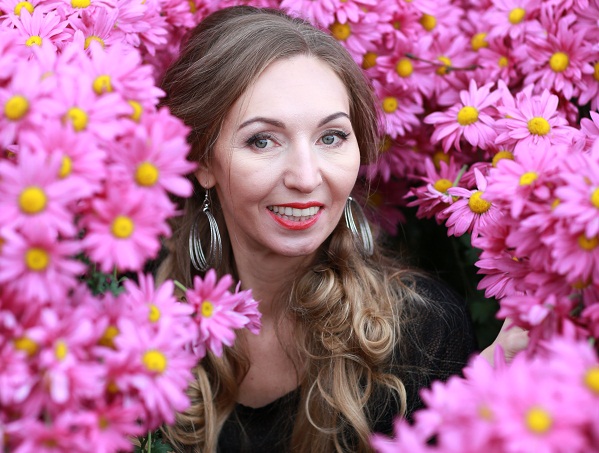The Crimean traces of the fair-haired devil
The Crimean traces of the fair-haired devil
“Charlotte Backson, the Countess de la Fere, Milady de Winter,” he said, “your crimes have wearied people on earth and God in heaven. If you know a prayer, say it – for you are condemned, and you shall die.”
“Is it so, virtuous gentlemen? Ten men combined to murder one woman,” Milady sneered. “The miserable cowards.”
In one gallery, among the pictures of many worthy people, you can find the darkened-by-time portrait of the fair-haired woman, uncommonly beautiful and as attractive as mortal sin, who was a secret agent of Cardinal Richelieu.
Milady is the evillest villain of the novel “The Three Musketeers” by Alexandre Dumas. She, the Countess de la Fere, Lady de Winter, constantly did harm to D’Artagnan and his friends-musketeers, created intrigues and brought death with her. But at the same time, it’s difficult not to fall under the spell of this woman with a fleur-de-lis branded on her shoulder. Her energy and intellect also deserve our admiration.
Alexandre Dumas always based his fiction on real events and historical characters. Milady also has a prototype in real life. It was the Countess de la Motte, who in the 18th century was known as one of the most famous adventuresses of that time. There are a lot of novels, memoirs and monographs which are written about her. Historians believe that the events, connected with the theft of the diamond necklace of Marie Antoinette, led to the collapse of the monarchy and the French Revolution. The Countess de la Motte was a direct participant of those events. And she also became the main character in another Dumas’ novel “The Queen’s Necklace”.
Jeanne was born in 1756 in northeastern France, in Bar-sur-Aube. Her father, Jacques de Saint-Remy, was a direct descendant of the illegitimate son of King Henry the Second. After her father’s death, the seven-year-old “poor orphan of the house of Valois” (as she called herself) lived on charity. One day, she was sitting with her outstretched hand on the street of Paris and as usual told passersby about royal blood flowing in her veins. By some fortunate providence of fate, the rich Marquise de Boulainvilliers passed Jeanne in her coach and was interested in the romance of the situation when many-times-great-granddaughter of King Francis the First asks passersby for alms. The Marquise made inquiries about the pedigree of the girl, sent her to boarding school and then took her to the Boulainvilliers’ home. When Jeanne has grown up, the Marquise’s husband began to sexually harass her. Not wanting to “repay her benefactress with base ingratitude,” she left the Boulainvilliers’ house and settled in the abbey of Yerres, near Paris, then in the abbey of Longchamp.
After experiencing both the hard life of a beggar and the luxurious life in the house of a rich Marquise, Jeanne learned the simple truth which she loved to repeat often, “There are two ways to beg for alms – at the church door, and from a carriage.” Of course, she preferred the second way.
When Jeanne turned 24 years old, she married an officer of the gendarmes Nicolas de la Motte. From this marriage Jeanne gave birth to twin boys, who died soon afterward. The young couple lived in the provinces, and apparently things were very bad for them. At the end of 1781 Nicolas and Jeanne went to Paris, trying to catch the ghost of their fleeting happiness.
From here, the adventurous fate of Jeanne began. She left her husband and became acquainted with a lot of interesting people, many of whom were attracted by this mysterious provincial woman who knew how to represent her intellect and body in the most advantageous way. The Count Beugnot wrote, detailing her appearance, that Jeanne had “beautiful hands” and “blue eyes full of expression”, “her complexion was remarkably white” and “her smile was enchanting”. But he also noted that she had “a wide mouth”, “a slightly elongated face” and some physical defect, the essence of which is difficult to understand because of the artsy style of the author. He wrote: “By a curious circumstance, nature, in making her breasts, had stopped halfway through the business, and the existing half made one sorrow for the rest.” However, the Countess de la Motte had a great success among men. All her contemporaries also said in one voice say that she was very clever. In Paris, Jeanne made acquaintance with Cardinal de Rohan and Count Alessandro Cagliostro, the greatest occultist and adventurer with whom she has become quite close in a short time. Just then the Countess de la Motte decided to make a fraud with a necklace of 629 diamonds.
The crime was exposed. The verdict of jury of 64 judges, headed by the chairman, d’Aligre, was harsh for Jeanne. She was sentenced to be whipped, branded as a thief and sent to life imprisonment in the prison Salpetriere. As Dumas wrote about Milady in his novel “The Three Musketeers”, “This woman was branded – this woman was marked with a fleur-de-lis on her left shoulder.”
In 1787 Jeanne de La Motte escaped from prison Salpetriere by seducing her jailer, and disappeared somewhere in Europe. Four years later, it was rumored that she died in London. Two years before her “death” Jeanne published her scandalous memoirs that defamed the French royal family. Many researchers tend to see a strong discrediting of royal authority in both the fiery speeches of Jeanne de La Motte at the court and her memoirs. And that discrediting played its role in the events leading to the French Revolution of 1789.
Newspapers wrote that Jeanne de La Motte died on 23 August 1791. But some time after her death she was “resurrected” under the name of the Countess Jeanne de Gachet. After changing her name, she also changed her country. In 1812 Jeanne became a subject of the Russian Empire.
Crimean researcher P.V.Konkov quotes a passage from the memoirs of Madame Birch, from which it follows that Jeanne, with her extraordinary wit and charm, managed to fascinate and puzzle even the Russian Emperor Alexander the First: “On the next day, at the appointed hour the Emperor was informed that she awaited him. He went out to the Countess and said, ‘You aren’t who you say you are. Tell me your real name…’” Her half-hour conversation with Alexander the First resulted in that she has joined the group of Pietists traveling to the Crimea. She did it not because of her religious belief, but because of Emperor’s insistent request. It was a strange journey of Russian mystics, the new missionaries, who wanted to convert Crimean Muslims to the Christian faith.
In August 1824 “an old lady of medium height, fairly slender, wearing a gray cloth redingote” stepped on the land of Crimea.
“Her gray hair was covered with black velvet beret with feathers. Her face didn’t seem meek, but it was intelligent and pleasant with living shining eyes. She spoke briskly and fascinatingly in elegant French”.
From the end of 1824 till the beginning of 1825, Jeanne spent her days with the Princess Anna Sergeevna Golitsyna in Koreiz. Then, the Countess moved to another Crimean place, Artek, where she settled in one of the oldest buildings on the coast. It was a lodge, built in the 17th century by the local lime burner. Later people called this building “The devil’s House” and “The House of Milady”. Even today you can hear stories about ghosts living in that “damn house”.
Jeanne died on 23 April 1826. She was buried at the Armenian-Catholic cemetery in Old Crimea. Her grave was decorated with a rococo style monogram, a vase with roughly made ornament, and a small cross at the top. The mysteries of the Countess remained there…
So ended the earthly journey of the Countess de La Motte, Milady, the intelligent and beautiful, lovely and seductive fair-haired devil. Of course, she was a negative character both in the book and in her life, but it’s difficult not to admire her!
About the author:
Olyona Rostova is a poet, publicist and fiction writer, an actress, television presenter, radio personality and model. She was born and raised on the banks of the famous Don River, one of the major rivers of Russia. She graduated from Rostov State Pedagogical University, and then from the North-Caucasian Academy of Civil Service. She was awarded the medal of the Moscow Literary Prize and the International Adam Mickiewicz Medal, Moscow/Warsaw, 2015.


























